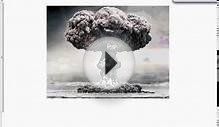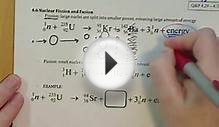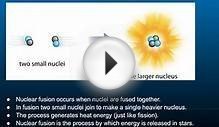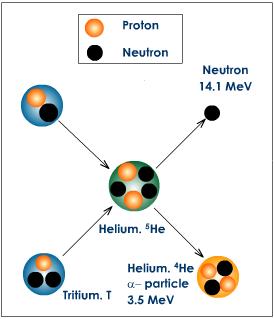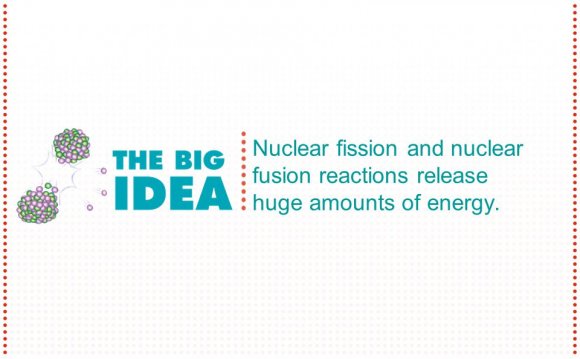
The sun is the most enormous and direct, source of energy. Where does this enormous energy that the sun radiates come from? The source of this energy was not known to mankind until the year 1939. It was a German physicist, Hans Bethe, who proposed that the sun contains hydrogen nuclei in its core, moving at large speeds. Whenever these nuclei fuse to form a nucleus of a heavier element, a large amount of energy is liberated. Such a reaction is known a nuclear fusion reaction.
Fusion Reaction between Isotopes of Hydrogen
Nuclear fusion is a reaction in which two or more light nuclei combine to form a heavy nucleus with the liberation of large amount of energy.
Note : One gram of hydrogen releases 6.2 x 1010 J of energy where as one gram of coal produces 33 KJ of energy.
Nuclear fusion takes place at a very high temperature which is equal to 4 x 106oC. Fusion is the combination of two like light nuclei and the nuclei must have sufficiently high kinetic energy to overcome the force of repulsion between the like nuclei. Therefore, for fusion reactions to occur, the two hydrogen nuclei have to collide at very high speeds, which is possible only at a very high temperature, equal to 4 x 106oC. Hence a fusion reaction is also known as thermonuclear reaction.Fusion releases more energy than fission because the mass lost during fusion is more than that lost during fission.
One of the practical application of nuclear fusion is hydrogen bomb.The basic principle involved in the preparation of hydrogen bomb is nuclear fusion. A nuclear fission reaction initiates the fusion reaction. In a hydrogen bomb the set up for fission reaction is surrounded by a mixture of deuterium (21H) and lithium. The nuclear fission reaction liberates heat energy and neutrons. The heat energy released creates a temperature equal to 4 x 106 oC and the neutrons are used for converting 63Li to tritium. The reactions taking place in a hydrogen bomb is as follows:
| Nuclear fission | Nuclear Fusion |
|---|---|
| Splitting of a heavy nucleus into two or more light nuclei | Combination of two light nuclei to form a heavy nucleus |
| Takes place at room temperature | Requires a very high temperature equal to 4 X 106ºC |
| Comparatively less amount of energy is released | Enormous amount of energy is released |
| Fission reaction can be controlled and the energy released can be used to generate electricity | Fusion reaction cannot be controlled and hence the energy released cannot be used to generate electricity |
| It is a chain reaction | It is not a chain reaction |
| It leaves behind radioactive wastes | It does not leave behind any radio active wastes |
YOU MIGHT ALSO LIKE
